TROUT is a 23′ outboard-motor-powered garvey designed by Harry Bryan. She was commissioned by a client whose access to a new family fishing camp was to be principally by water. The design mandate was for a boat that could carry not only 12–14 people, but also propane tanks, aviation fuel for a sea-plane, an all-terrain vehicle, and a wheelchair-bound passenger. The boat would not be fast, necessarily, and it had to fit a particular “distressed” aesthetic. Specifically, it had to look like it was a century old.
The camp would be designed to appear as if it sprung from the surrounding landscape. The boat was to have no garish features that would destroy its harmony with this backdrop. The 20-hp motor was to be hidden away in a covered well, and its controls carefully concealed but accessible. “I had to argue with the clients,” said Bryan, “to put some oil on the cedar deck.”
Eventual road access to the camp diminished the necessity of TROUT’s original mission, and soon after she was completed Bryan was asked to find a good home for her, which he did. Today, the boat serves a family compound on a remote Maine lake. Although we didn’t see her in her intended home, she indeed appears to have grown from this adopted landscape of spruce-fringed granite outcroppings.
The boat has stick steering, like a yacht club launch. This system involves a vertical tiller swinging fore-and-aft about amidships on the boat’s starboard side. Push the tiller forward, and the boat turns to port; pull it aft, and she turns to starboard. Bryan chose this arrangement both to avoid having a visible contemporary steering wheel, and to free up cargo space in the center of the boat. (One of his earlier garveys, built for a similar purpose but meant to carry less of a load, has a center console.)
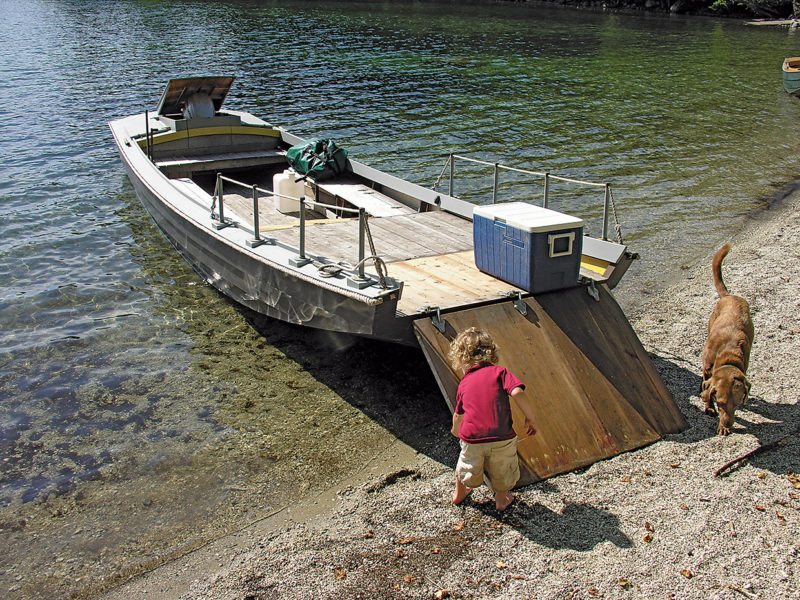 Matthew P. Murphy
Matthew P. MurphyTROUT’s flip-down ramp is meant to mate with a dock, though with some modification it would function well for beach landings, too. It also makes a good slide.
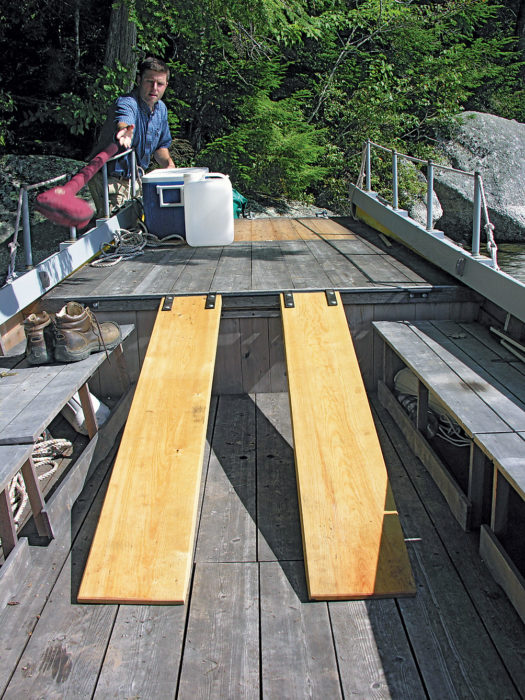 Matthew P. Murphy
Matthew P. MurphyA pair of adjustable ramps allow heavy, wheeled objects to be rolled from the raised foredeck down to the boat’s sole.
The raised foredeck platform is bounded by short, painted, black-iron pipe stanchions capped with oak plugs on top and threaded into flanges at the bottom; the flanges serve as bolted-on bases. The oak plugs are drilled for rope lifelines. A pair of removable ramps stows underneath this foredeck; they can be slid out and mounted in position, their distance from each other adjustable, to allow heavy gear on the foredeck to be rolled onto the lower main deck. A short hinged ramps folds back onto the raised deck when the boat is underway. This ramp was designed to mate with a floating dock: Nose the boat into the float, flip down the ramp, and you have an effortless connection to the shore for loading or unloading of all that gear.
I’ve come to think of this boat as an outboard-powered pier. Imagine a situation in which a larger, deeper-draft boat were moored off of a sandy or fine-gravel beach with no pier facilities. This garvey, with a longer bow ramp than the boat I tested, could be brought into that beach, and the ramp flipped down to the beach. Passengers could be easily loaded, the boat poled into safe water, and the motor started.
This garvey is built upside-down over oak or locust frames whose heads, for building purposes, extend all the way to the building baseline. They’re trimmed to their proper heights once the hull is inverted. A keel batten and two chines are sprung along the frames, and the outboard motor’s transom is fitted and fastened into place. The keel batten is beveled to receive the bottom planking, and it comes to a point along the centerline.
Two layers of 5 ⁄8″ cedar planking, laid on opposing diagonals, make up the bottom. Thickened epoxy joins these layers, and they’re clamped the old-fashioned way, with temporary drywall screws. Not only is this bottom strong and watertight, but it also makes good use of short stock. “The secret to such a bottom,” says Harry Bryan, “is to remember that epoxy is cheap compared to the price of a repair.” In other words, don’t starve the joint between the plank layers of glue. When this planking is completed, a flat is planed into it along the center-line to receive an oak shoe. The topsides are planked in conventional lapstrake cedar, copper-riveted along the laps and screw-fastened to the frames.
There’s no denying the benefits of contemporary out-board motors: They are quiet, efficient, and lightweight. But when you’re designing and building a boat of a certain timeless aesthetic, they do present their challenges. Aside from the blaring graphics, even the simplest motor has a throttle, a shift, a kill switch, and a key. All of these features are studiously hidden away in TROUT. In fact, when I stepped aboard to test the boat recently, I was stymied for several minutes in trying to start the engine. I’d pumped the fuel bulb and priming lever, then turned the key, which is mounted on the console. The engine just cranked without a hint of firing. “Kill switch…,” I thought. “Where’s the kill switch?” After some searching, I discovered the button artfully hidden away in a locker to star-board of the engine. A nondescript-looking lanyard led through a hole in a bulkhead, allowing the switch to still function.
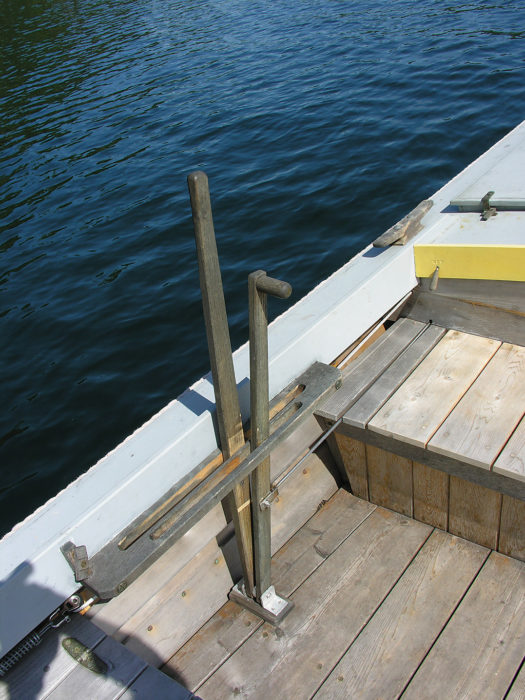 Matthew P. Murphy
Matthew P. MurphyTwo simple oak sticks control the boat’s direction and speed. The inner stick is the gearshift lever.
I‘ve been aware of Bryan’s camp utility garveys for years, and have been eager for all of that time to try one of these boats. I finally got the chance last August. On my outing, I was joined by a friend of TROUT’s owner, who followed next to me in another boat. “I can’t even hear that boat running,” the friend said when I finally did get the engine started. There are two oak sticks handy to the driver’s right hand: one controls both the shift and throttle, and the other is the tiller. TROUT backed easily away from the dock, and was quite steerable in both directions, thanks to the directional reverse thrust of the outboard motor. Drivers of inboard-motor-powered boats steered by rudders will appreciate this quality, as their boats often turn in only one direction when backing up, and require special handling skills.
Once clear of the dock, I throttled up. The bow rose a few degrees as the hull settled onto its after sections, just as it’s meant to do. This is a planing hull with a displacement heart; while a bigger motor could push it onto plane, that’s not what the owners or the designer had in mind. Bryan’s earlier garvey, mentioned above, was meant to plane and attain some speed. But this one is for carrying a load. In fact, Bryan made some shop-floor changes to his drawings, to enhance the load carrying even more: He added 6″ to the boat’s beam during lofting.
I didn’t test the boat’s load-carrying ability, but I think I would have been hard-pressed that day to gather together enough stuff—or enough people—to test it to its limit. But that’s of no consequence, because the boat’s abilities are transparent. I have no doubt that the specified party of 12–14 people would remain comfortable, safe, and dry in modest lake conditions—or that the drum of aviation fuel would arrive intact at its camp-side destination.
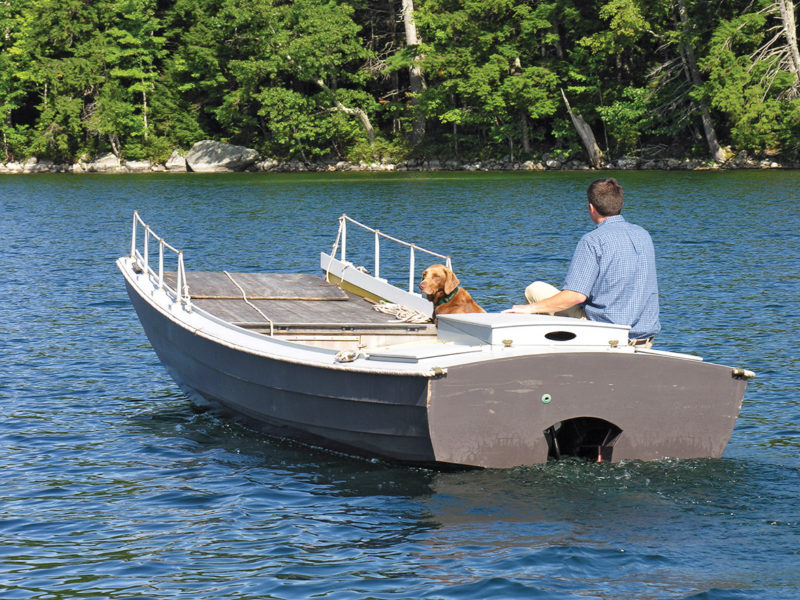 Matthew P. Murphy
Matthew P. MurphyWith her subdued paint scheme and lack of graphics, TROUT is meant to blend in with a lakeside landscape.
We took TROUT to a beach not far from the camp, and folded down the bow ramp. This ramp, recall, is meant for a dock, so it’s shorter and thus steeper than it might be for a beach landing. But it still proved handy, and was great for my two-year-old son, who found its pitch perfect for sliding onto the beach.
The boat beached easily, with the electric trim drawing the propeller clear of the bottom as she glided to a gentle grounding. It was easy to imagine a load of camping gear piled into the boat—or a large barbecue grill and several coolers. TROUT really opens up some otherwise-off-limits terrain, while leaving a very small footprint and making little noise.
The return to the camp’s dock from the beach was meditative. Upon arrival, though, I found that the launch-driving skills I’d honed over several summers more than two decades ago had atrophied: Coming alongside with stick steering is easy once it’s mastered, but the movement of the tiller—remember, forward for a turn to port, and aft for a turn to starboard—must become second nature. You can’t think about it too hard. Practice makes perfect; despite my initial awkwardness, I wouldn’t trade this simple and elegant option for a wheel on this boat.
After the owner’s friend and I secured the boats, we made our way up the gangway smiling at the sheer ingenuity and level of thought in this able and easy little barge. He summed up the experience perfectly: “This is a very relaxing boat,” he said. ![]()
Plans for the Trout are available from Bryan Boatbuilding, Letete, New Brunswick.
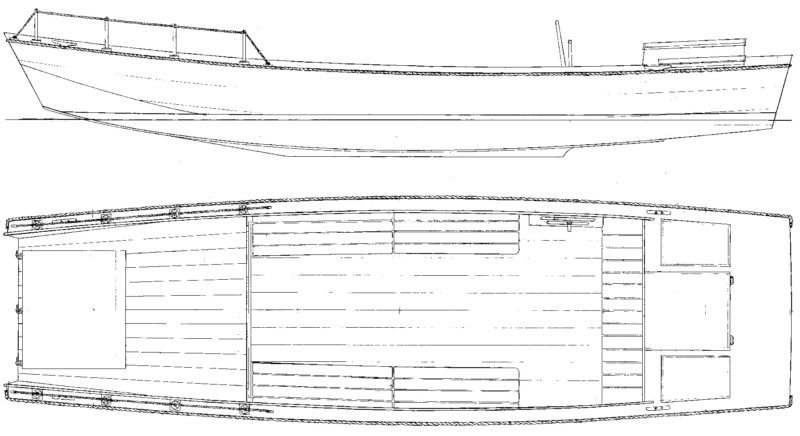
TROUT’s hull form is that of a traditional V-bottomed garvey—a small scow-shaped boat meant for any of a variety of tasks. TROUT’s principal job is to haul a load of gear at modest speed—and to remain stable while doing so.
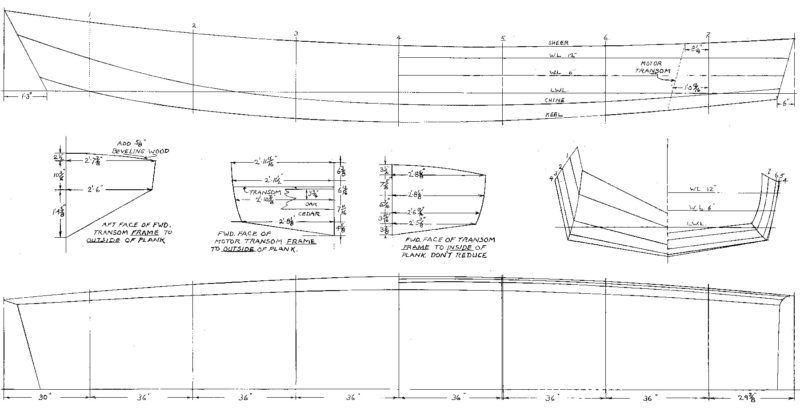
TROUT Particulars: LOA 23′, Beam 6’6″, Draft 13″, Displacement 1500 lbs
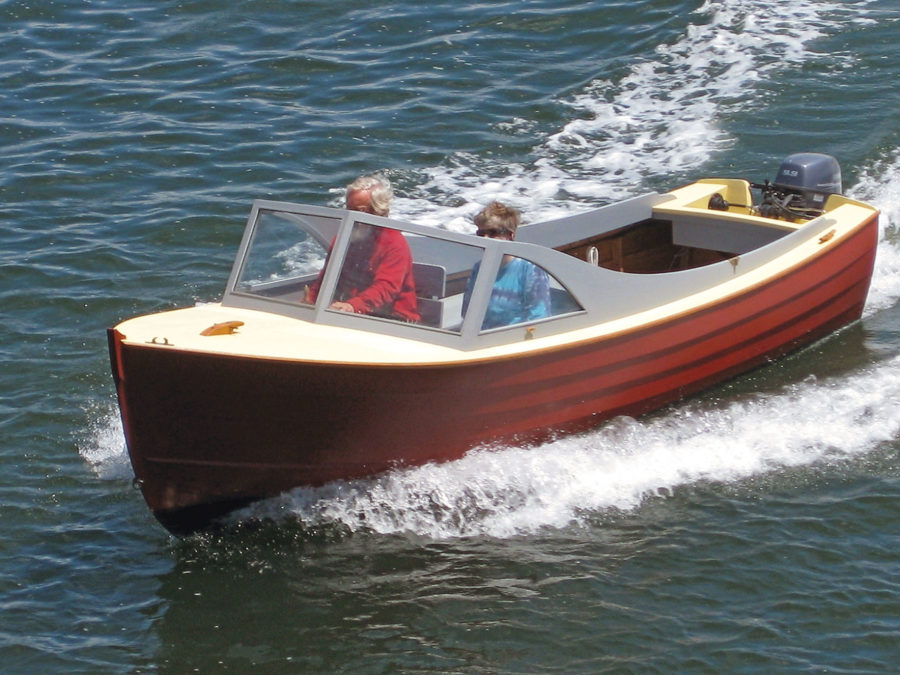
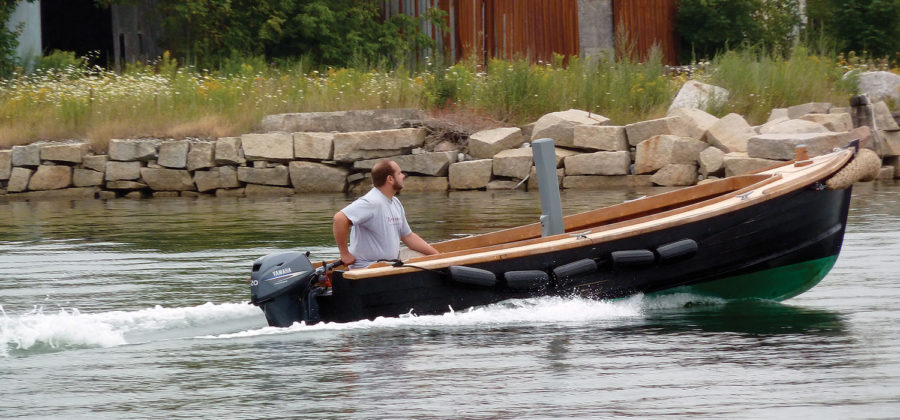

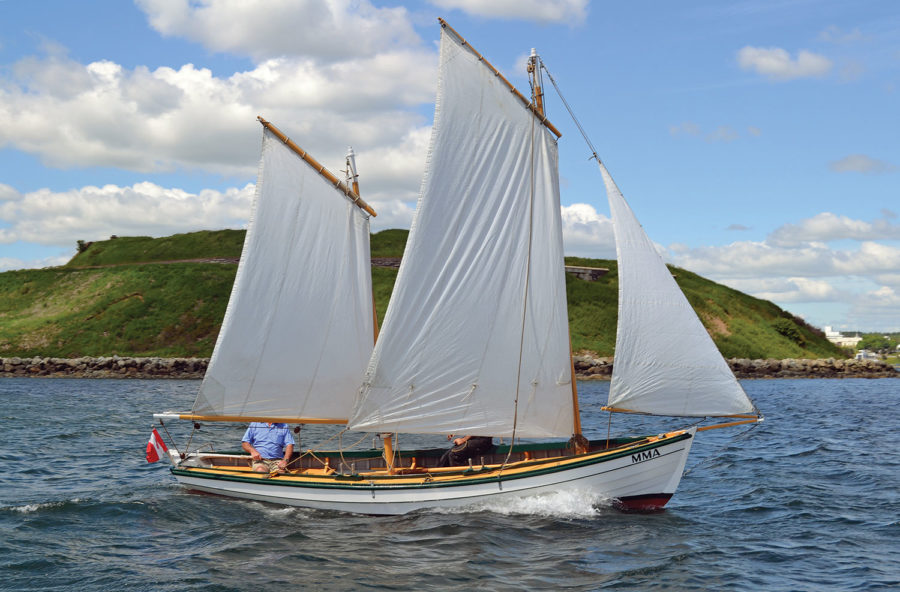
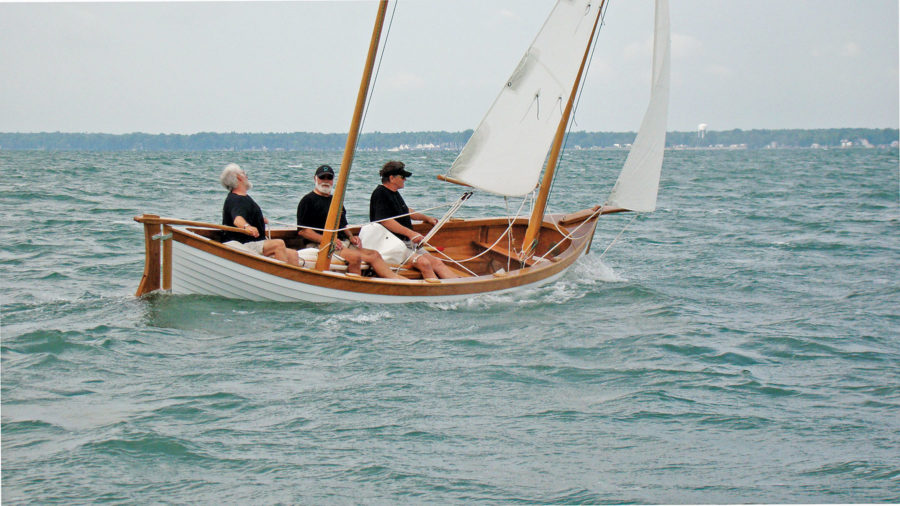
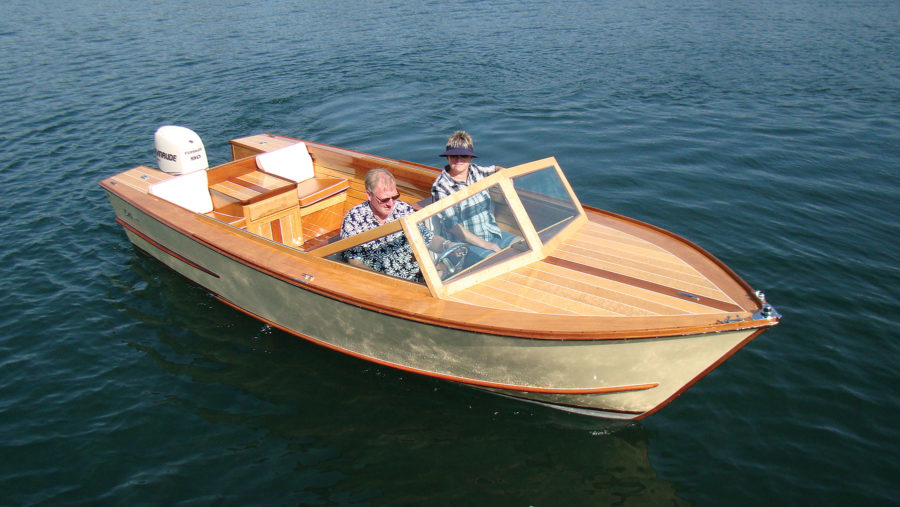
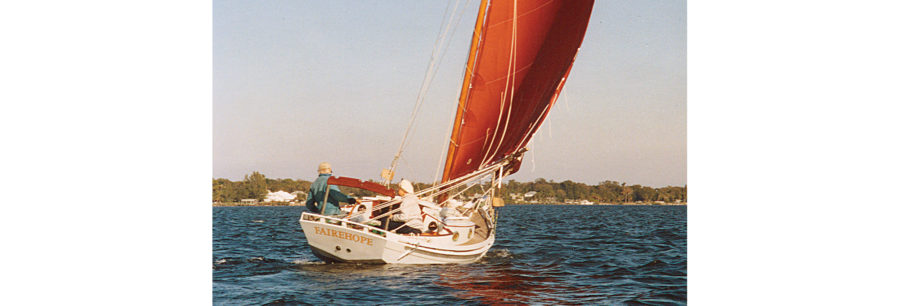
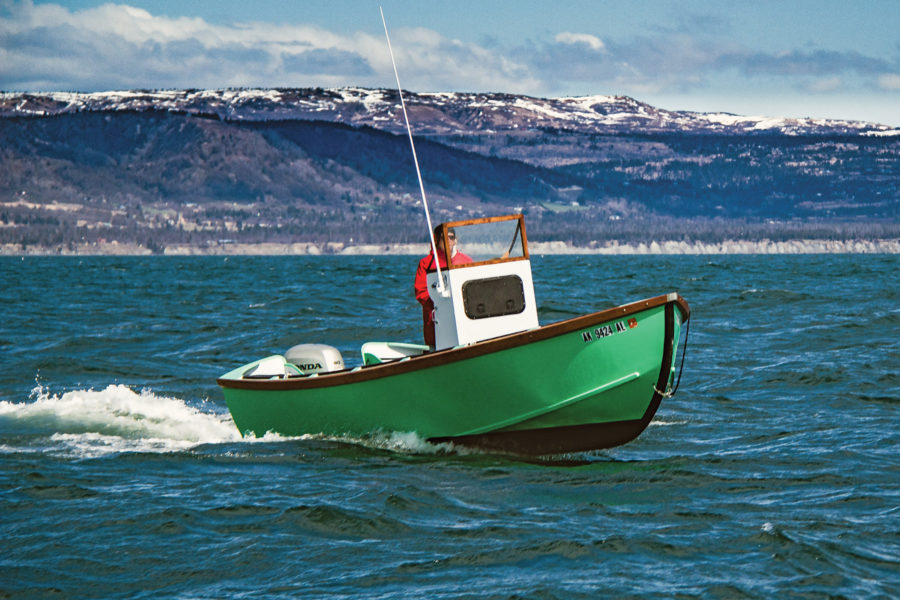
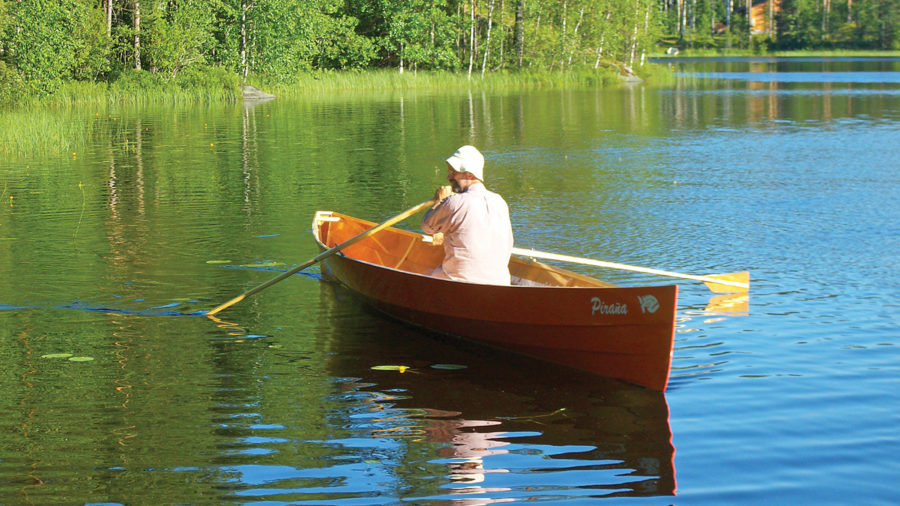
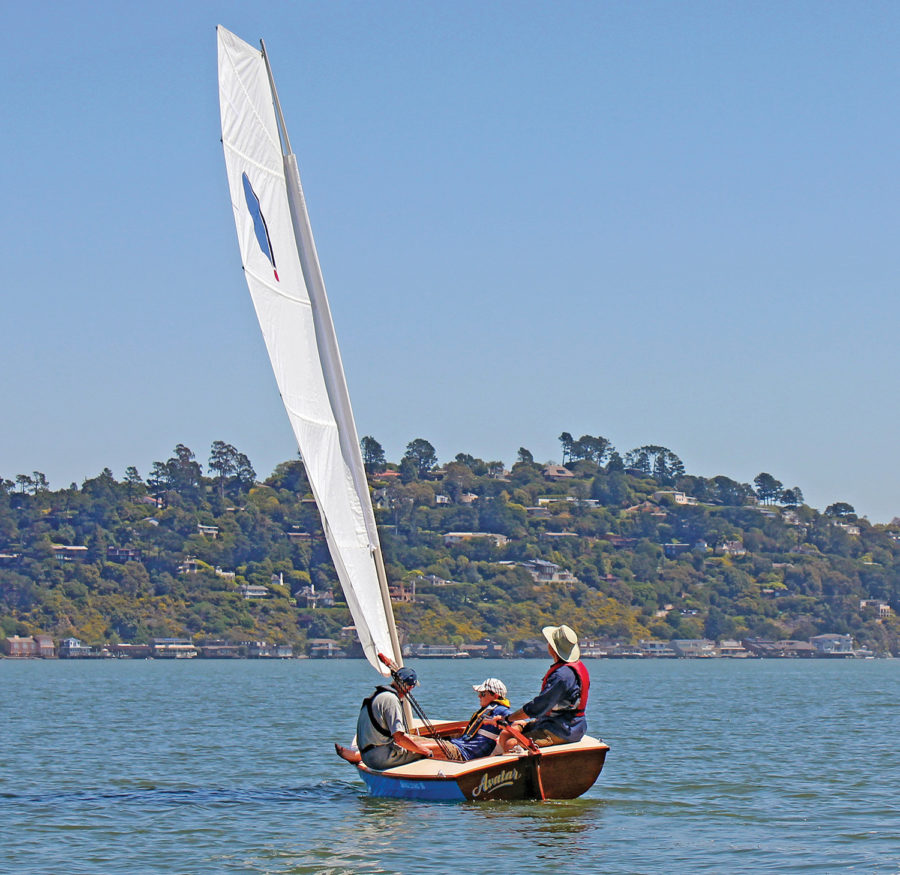
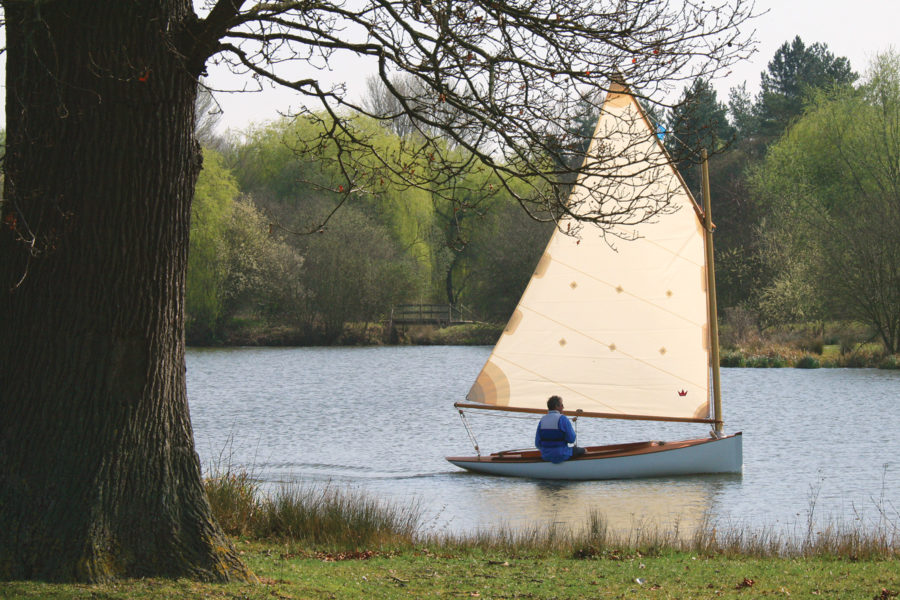
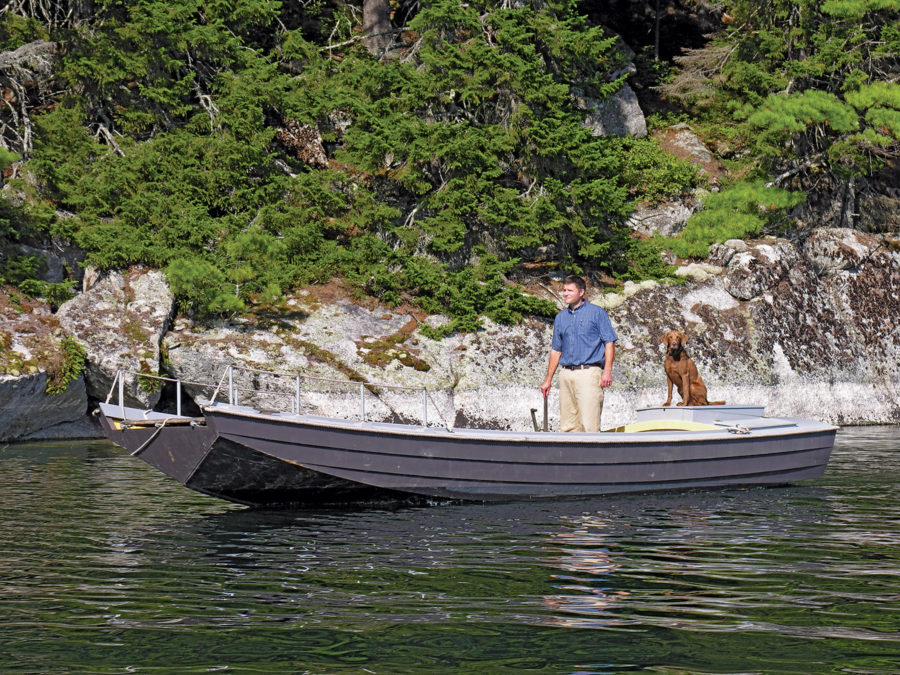
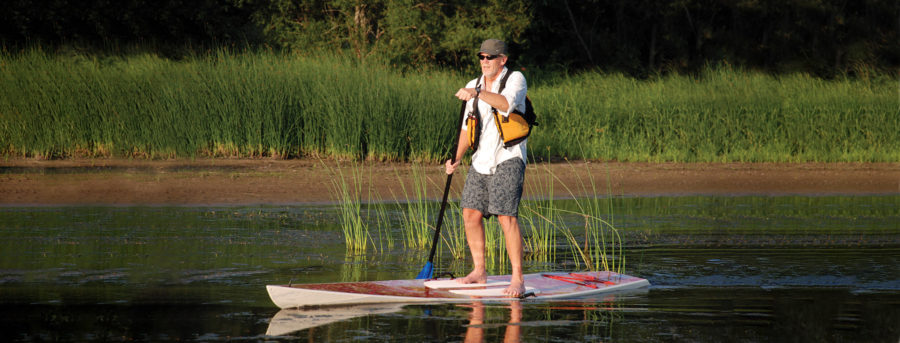
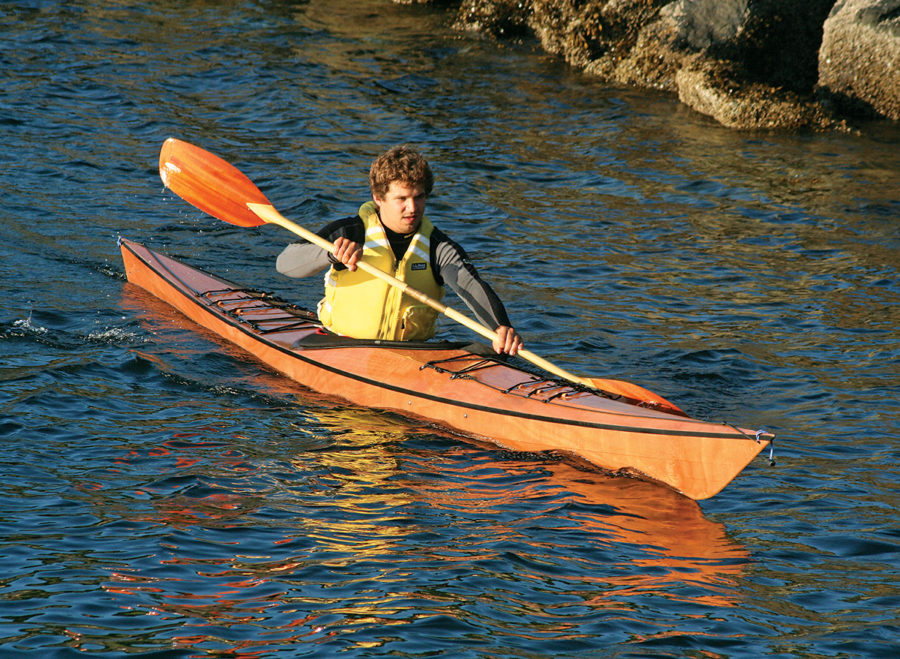
I would love to see details on how the motor was rigged to be operated. The steering I understand. That’s more or less straightforward. But how does the the usual throttle/shift/ignition control that is supplied by the motor manufacturer get transformed into an oak stick and lanyard?
Great looking boat that I would have had some serious use of in bygone days living in Alaska!